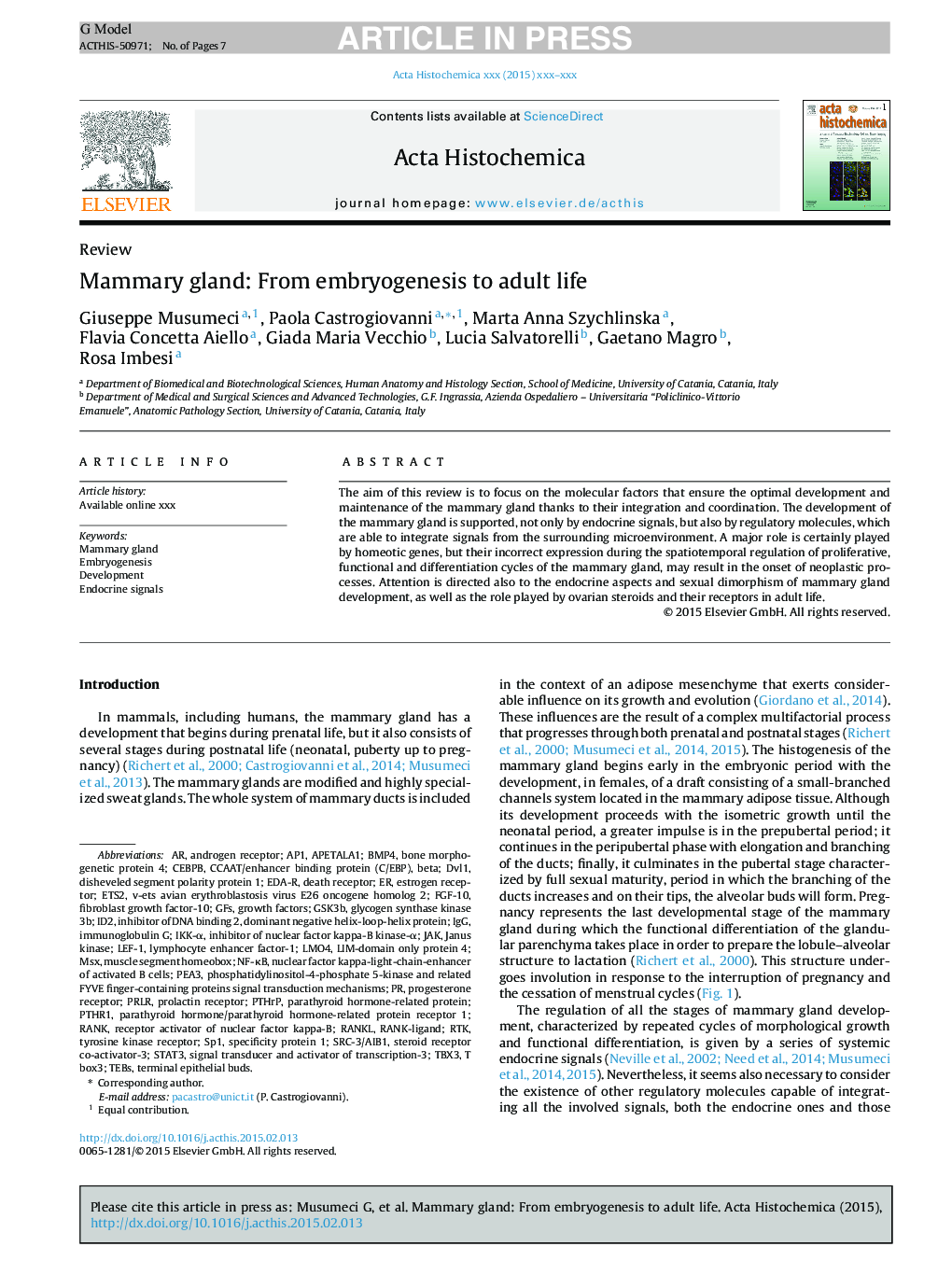| Article ID | Journal | Published Year | Pages | File Type |
|---|---|---|---|---|
| 8287616 | Acta Histochemica | 2015 | 7 Pages |
Abstract
The aim of this review is to focus on the molecular factors that ensure the optimal development and maintenance of the mammary gland thanks to their integration and coordination. The development of the mammary gland is supported, not only by endocrine signals, but also by regulatory molecules, which are able to integrate signals from the surrounding microenvironment. A major role is certainly played by homeotic genes, but their incorrect expression during the spatiotemporal regulation of proliferative, functional and differentiation cycles of the mammary gland, may result in the onset of neoplastic processes. Attention is directed also to the endocrine aspects and sexual dimorphism of mammary gland development, as well as the role played by ovarian steroids and their receptors in adult life.
Keywords
AP1FGF-10Pea3Ets2LEF-1Id2APETALA1GFSMSXLMO4RTKPTHrPPRLRPTHR1receptor activator of nuclear factor kappa-BGSK3BCEBPBTBX3DVL1STAT3BMP4NF-κBIKK-αRANKLIgGglycogen synthase kinase 3bJanus kinaseSp1immunoglobulin GEmbryogenesisRankDevelopmentMammary glandGrowth factorsnuclear factor kappa-light-chain-enhancer of activated B cellsfibroblast growth factor-10Signal transducer and activator of transcription-3Specificity protein 1Parathyroid hormone-related proteinbone morphogenetic protein 4JAKAndrogen ReceptorEstrogen receptorTyrosine kinase receptordeath receptorprolactin receptorProgesterone receptor
Related Topics
Life Sciences
Biochemistry, Genetics and Molecular Biology
Biochemistry
Authors
Giuseppe Musumeci, Paola Castrogiovanni, Marta Anna Szychlinska, Flavia Concetta Aiello, Giada Maria Vecchio, Lucia Salvatorelli, Gaetano Magro, Rosa Imbesi,
